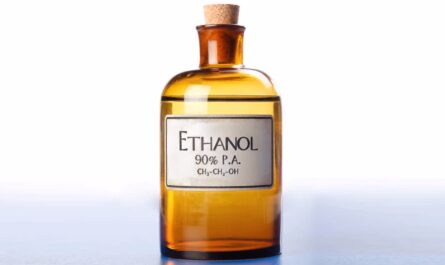The global ethanol market is a promising alternative fuel source that is estimated to be valued at US$ 114.02 billion in 2024 and is expected to exhibit a CAGR of 3.9% over the forecast period 2023 to 2030. Ethanol or ethyl alcohol is a clear, colorless liquid primarily produced by the fermentation of sugars by yeasts or via petrochemical processes. It has typically been produced by fermentation of sugars derived from corn in North America and sugarcane in South America, Asia, and Africa. Ethanol is widely used as a fuel additive to increase octane and improve vehicle emissions with reduced dependencies on petroleum.
Key Takeaways
Key players operating in the ethanol market are Archer Daniels Midland Company (ADM), Valero Energy Corporation, Green Plains Inc., Flint Hills Resources LP, and POET LLC. ADM is one of the largest ethanol producers in the United States. Valero Energy Corporation operates ten ethanol plants in the United States, Canada, and the United Kingdom.
There has been a growing demand for cleaner and greener fuels worldwide due to rising environmental concerns and government initiatives to reduce carbon emissions from the transportation sector. Many countries have implemented policies like mandatory blending of gasoline with ethanol to reduce petroleum imports and curtail air pollution. E10 Mandates in the US and Europe along with strict emission norms have boosted the consumption of ethanol-blended gasoline.
Globally, the ethanol industry is expanding rapidly to capitalize on the rising need for more sustainable fuel sources. Many developing economies like China, Brazil, India are also focusing on enhancing domestic ethanol output to substitute fossil fuels. Emerging economies in Asia Pacific and Latin America offer lucrative opportunities for ethanol producers due to availability of feedstock and growing flex-fuel vehicles. Initiatives such as the EU’s Renewable Energy Directive are promoting international trade of biofuels including ethanol.
Market Key Trends
One of the primary trends driving the ethanol market is the increasing focus on second-generation biofuels produced from non-grain feedstocks like agricultural residues and wood wastes. Advanced technologies allow the conversion of cellulose and hemicellulose into fermentable sugars leading to higher ethanol yields. This helps address issues related to competition with food supplies and boosts the economic feasibility of cellulosic ethanol plants. As technologies mature, cellulosic ethanol production is expected to ramp up significantly, boosting the global ethanol supply.
Porter’s Analysis
Threat of new entrants: New entrants will face high barrier due to requirement of large scale production and high capital investment. Bargaining power of buyers: Buyers has significant bargaining power due to presence of many existing players and low differentiation between products. Bargaining power of suppliers: Suppliers has moderate bargaining power due to availability of potential substitutes. Threat of new substitutes: New substitutes can emerge as alternative biofuels may substitute ethanol if found economical and feasible. Competitive rivalry: Intense competition exists among existing players.
Geographical Regions
The North American region dominates the global ethanol market, both in terms of value and volume. Factors such as favorable government policies, availability of raw materials, and presence of key players contribute to North America holding the largest share of the global ethanol market currently.
The Asia Pacific region is expected to be the fastest growing market for ethanol during the forecast period. This growth can be attributed to increasing demand for ethanol from end-use industries such as automotive, alcoholic beverages, and chemicals coupled with rapid industrialization in developing countries of the region.
*Note:
1.Source: Coherent Market Insights, Public sources, Desk research
2.We have leveraged AI tools to mine information and compile it




